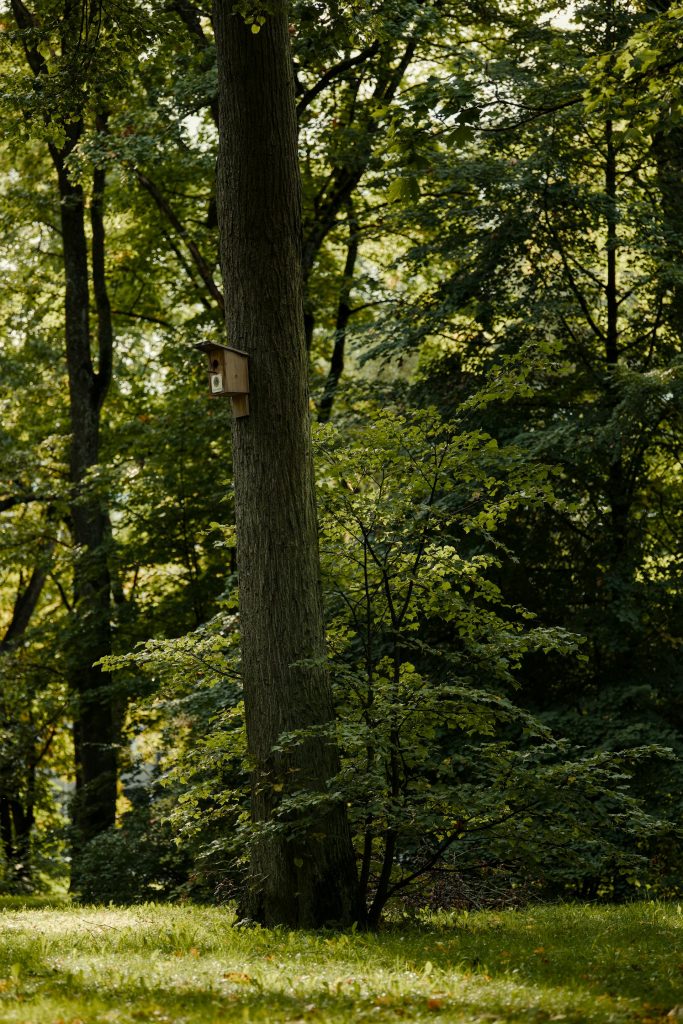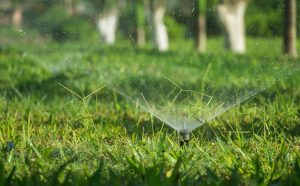Installing Nesting Boxes: Attracting Birds to Your Landscape
There’s something special about watching songbirds flutter around your yard, perch on tree branches, and feed their young. Attracting birds to your landscape isn’t just enjoyable—it’s also a smart and eco-friendly way to help local ecosystems thrive. One of the easiest and most effective ways to bring more birds into your space is by installing nesting boxes.
At Horizon Landscape & Irrigation, we love helping Montana homeowners transform their yards into welcoming environments for native wildlife. If you’re looking to add beauty, movement, and birdsong to your garden or outdoor space, here’s how to get started with nesting boxes the right way.
1. Why Add Nesting Boxes?
Nesting boxes, also called birdhouses, offer safe places for birds to raise their young. In many areas, natural nesting sites like tree cavities or thick brush are harder to find due to development and land clearing. That’s where a well-placed nesting box can make a big difference.
Benefits include:
Supports Local Wildlife: Helps species like chickadees, bluebirds, and wrens thrive.
Natural Pest Control: Insect-eating birds reduce mosquitoes, beetles, and other garden pests.
Educational Value: Watching birds build nests and feed their young is fun and fascinating for kids and adults alike.
Pollination + Seed Spreading: Many birds support native plant growth through natural pollination and seed dispersal.
Adding even one or two nesting boxes can turn your backyard into a lively, natural retreat.
2. Choose the Right Birds for Your Area
In Montana, you’ll find a wide variety of cavity-nesting birds that may be interested in a nesting box, depending on your yard’s surroundings. Some common species include:
Mountain Bluebird
Tree Swallow
Black-capped Chickadee
House Wren
Northern Flicker
American Kestrel (larger box required)
Before buying or building a nesting box, think about which birds you’d like to attract. Different species have different box size and entrance hole preferences.
3. What Makes a Good Nesting Box?
Not all birdhouses are created equal. To provide a safe and functional nesting space, keep these guidelines in mind:
Materials: Use untreated wood like cedar or pine. Avoid metal or plastic, which can overheat.
No Perches: Perches may invite predators. Most cavity-nesting birds don’t need them.
Drainage + Ventilation: Small holes on the bottom and sides prevent moisture buildup and allow airflow.
Secure Roof + Hinged Side: A slanted, overhanging roof keeps rain out, and a hinged side lets you clean the box after each season.
Correct Dimensions: Entrance hole size, box depth, and floor space should suit the target species.
We can help you find or build boxes that match local species and complement your landscape design.
4. Placement Tips for Nesting Success
Where and how you place your nesting box matters just as much as the design.
Height: Most boxes should be mounted 5–10 feet above the ground. Predatory birds or pets should not have easy access.
Direction: Face the entrance away from prevailing winds. In Montana, east-facing is usually ideal for warmth and protection.
Spacing: Keep boxes well-spaced (at least 20 feet apart for smaller species; more for territorial birds like bluebirds).
Mounting: Use poles or posts rather than trees when possible to deter squirrels and snakes. Add a predator guard if needed.
Avoid high-traffic areas and keep boxes at a reasonable distance from feeders to reduce territorial disputes.
5. Timing + Maintenance
Install your boxes in late winter or early spring so they’re ready before nesting season begins. Some birds will even use boxes in fall and winter for shelter.
Ongoing care includes:
Cleaning the box out each fall to remove old nesting material.
Checking for damage or loose hardware.
Ensuring the entrance hole stays unobstructed.
If you’re not sure what birds are using your box, we recommend installing a small wildlife camera or keeping a journal to track visits throughout the year.
6. Extra Touches to Attract More Birds
Once your nesting boxes are in place, you can make your landscape even more bird-friendly by:
Planting native shrubs, wildflowers, and grasses
Adding a shallow water source like a birdbath
Avoiding pesticides and herbicides
Offering nesting materials like pet hair, cotton fibers, or dry grass
Together, these features create a safe and nurturing environment that encourages birds to settle in your yard season after season.
Bring Life to Your Landscape
At Horizon Landscape & Irrigation, we believe in designing outdoor spaces that benefit both homeowners and nature. Nesting boxes are a simple but powerful way to enhance your property and support the songbirds that make Montana special.
If you’re interested in integrating birdhouses, pollinator gardens, or wildlife-friendly landscaping into your next project, reach out today. Visit https://horizonlandscapemt.com to schedule a consultation.
Read Next: Creating a Native Wildflower Meadow: A Step-by-Step Guide




